The first museum in Bursa was built in 1904 at a section of Bursa Boy's Lycee, with the efforts of Mr. Azmi, the Director of the National Education Office, as a branch of Müze-i Humayun. The monuments collected and exhibited here were carried to Yeşil Madrasa in 1930. The archaeology section of the museum was moved to the modern building built in Kültürpark as "Archaeology Museum" in 1972. And Yeşil Madrasa was opened to visit in 1975 as "Turkish Islamic Monuments Museum" after being restored.
There are six museums in Bursa working as an affiliate of Museum Directorate.
ARCHAEOLOGY MUSEUM
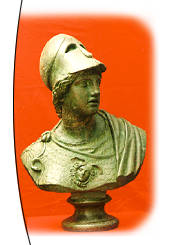
The archaeological monuments collected in Bursa Boy's Lycee and Yeşil Madrasa between the years 1904 - 1972 were carried to Archaeological Museum built in Kültürpark and opened to visit in 1972 after its modern restoration. The museum still serves in the same building. The monuments being exhibited in the museum are the ones found in Bithynia and Mysia regions between the period BC 3 thousand and the end of Byzantine Period.
Hall I: The monuments in this hall are: grave findings that belong to the culture of BC 3 thousand; cutting stone and bronze axes that belong to BC 2 thousand; cooked soil vessels of Urartu region; miniature temple sample of Phrig Period in BC 1 thousand; bronze vessels and a mosaic of fibulas history. The figurines and the grave findings such as vessels and ornaments in various forms found in rescuing digs of the museum in Antandros necropolis are all important monuments. One of the important monuments in the hall is Greco - Persian grave stele found in Şükraniye Village of Karacabey. This monument that belong to Persian Period, which occupied Anatolia in BC 546, is one of the three samples in the world, of which two are in İstanbul Archaeology Museum.
Hall II: In this hall where stone works of Rome Period exist, there are portrait heads belong to AC 2nd century; pictures of Zeus, the god of the gods; picture of Herakles, the representative of force, describing his position in rest with the fur-skin around his arm after he suffocated the Nemea lion; statues of Kybele, the oldest fecundity goddess of Anatolia and altars vowed to Asklepios, the health goddess. Among the most important monuments of the hall, there is a bust of Athena, "the Goddess of War and Intelligence" and Apollon, "the God of Sun".
Hall III: The monuments of the period between BC 8th century and the end of Byzantine Period are being exhibited in this hall. The ceramic vessels in various forms belonging to a period between the Geometric Ages and Rome Period are being exhibited in this hall according to a chronological order. Among these monuments, there are cooked soil figurines of Archaic and Rome Period; bronze and glass vessels and ornaments of Rome Period; cooked soil oil-lamps; silver, bronze and cooked soil works of Byzantine Period. There are also golden ornaments of Rome Period in this hall.
In mezzanine floor of the same hall, golden, silver and bronze coins of Archaic, Classic, Hellenistic, Rome and Byzantine Period are being exhibited.
Hall IV: Among the monuments being exhibited in this hall, there is a tumulus similar to the one in Üçpınar Village of Balıkesir at 1/1 dimensions and the findings of a carriage that belong to Akhaemenid Period and the sample of this carriage made according to these findings.
Open Exhibition: There are important stone monuments in the garden of the archaeology museum. The rich stele collection, which is considered important within Turkish museums, is being exhibited in this hall. It is also worth seeing the samples of tomb graves found in Bursa and its environs, and various architectural parts.
ATATÜRK MUSEUM
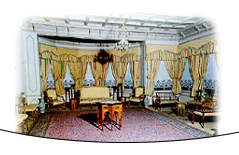
It is supposed that the building located in Çekirge Street was built at the end of 19th century. The pavilion is duplex, except the basement and the attic. At Atatürk's second visit to Bursa (20-24 January 1923), the Municipality of Bursa bought this building from the Colonel Mehmet and gave it to Atatürk as a gift. Then, at each his visit to Bursa, Atatürk stayed in this house. After 1938, the Municipality of Bursa sold the house to Turkish Republic Pension Fund and the Pension Fund transferred the use of the pavilion to the General Directorate of Monuments and Museums on February 6th, 1968. The pavilion was changed to a museum and opened to visit at 50th year of the Republic, on October 29th, 1973.
1st Floor: It consists of reception hall at right side of the entrance, dining room at left side and a resting room opening to the dining room.
2nd Floor: There is bedroom at right side, a working room at left side and one can reach to the greenhouse passing from the right side of the working room. The basement was used as kitchen and service. Almost all of the furniture in the pavilion is the original ones Atatürk used.
THE MUSEUM OF MUDANYA ARMISTICE HOUSE

Mudanya Armistice, which is the indication of the first success of Turkish Grand National Assembly at political field, was signed in this house. The house, which is located at the centrum of Mudanya District, has a history based on 19th century.
The house, which belonged to Alexander Ganyanof from Russia, was bought and restored by a businessman, Mr. Hayri İpar from Mudanya, and was changed to a museum of Mudanya Municipality in 1937. The museum was transferred to the General Directorate of Old Monuments and Museums in 1959.
The wooden house is duplex, except the basement and the attic. The hall in which the armistice was signed and the working room of İsmet Pasha are on the first floor. There are bedrooms of İsmet Pasha and his aide-de-camps.
The photographs and documents of armistice period are all being exhibited in this house where the goods of this period are being protected.
MUDANYA TAHİR PASHA MANSION

The building is duplex. Its plan was changed many times and lost its older form.
The main room in the second floor is ornamented with chisel. The bottom and upper windows at two front of the room have coloured glasses. The surfaces of the walls are covered with malacari plaster ornaments. The inside of the panels is ornamented with flower motifs. The closet covering a wall of the room is ornamented with chisel. The date 1138H./1725 M. is written on the outer door of the room.
THE MUSEUM OF TURKISH - ISLAMIC MONUMENTS (YEŞİL MADRASA)
Yeşil Madrasa (Muslim theological school), which is one of the first schools of Ottoman period, is named as Sultaniye Madrasa. It was established in Yeşil complex by the architect Hacı İvaz with the order of 1st Mehmet Çelebi between the years 1414 - 1424.
It is a continuation of Anatolian Seljuk's schools having open courtyard (vaulted recess) in terms of plan. Rubble, stone and brick are used as construction material. From the vaulted recess at the entrance covered with star vault, you may enter a sharp arched door and colonnaded courtyard. The colonnades surrounding the courtyard at three sides are sharp arched; and the subsequent mutual ones are covered with barrel - vault, the ones in front of the lateral vaulted recess are covered with cross - vault, and the others are covered with domed vault. Some of the columns and column heads at colonnades belong to Byzantine Period. At the back of the colonnades, there are 13 schoolrooms, two lateral vaulted recesses, toilet and stairwells. It is supposed that the building has a second floor, but this assertion could not be proved yet. There is one furnace at each room of the building, covered with mirrored vault. Two lateral vaulted recesses on the level of the rooms are stripped arched. Two-sided stair is used to climb to the classroom at the opposite side of the entrance, having a rectangle shape. Pendants with stalactite ensure passage from the rectangular area to the drum of the cupola. The cupola is mounted on a drum covered with octagonal and prismatic Turkish triangles. A small window was opened to the middle of each side of the drum.
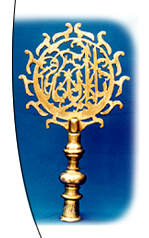
The eaves are in hedgehog shape. The wooden eaves on the vaulted recess at the entrance are not original; they belong to the other restoration periods.
Porcelain ornaments in the school is very few when compared to the other buildings of the complex. Mosaic porcelain and colored glazing techniques are used on porcelain ornaments. And there is a central porcelain ornament in the middle of the ceiling, ornamented with geometric motifs formed by a star with twenty angles. The other porcelain ornaments of the school are the small turquoise porcelains with triangular, rectangular and other shapes covering the mirrors of sharp arches located in the outer front.
The school was restored in various periods; and Bursa Museum, which was opened on August 19th, 1902 in Boy's Lycee, was transferred to the school on April 8th, 1930. It was closed to visit in 1955 due to restoration works; and re-opened on October 1st, 1972 with new exhibition and arrangements. The school, which was taken into restoration until March of 1972, was opened to visit on November 22nd, 1975 as the Museum of Turkish - Islamic Monuments.
Various monuments are being exhibited in the school, which carry the characteristics of Turkish - Islamic art between the dates 12th century and 19th century.
Western Lateral Vaulted Recess
The ceramics exhibited in two lateral vaulted recesses are placed to the display cabinets according to chronological order. The unglazed ceramics of 12th - 13th centuries Seljuk period, glazed Rakka ceramics of Seljuk period and a vase with two handles made with rare minai technique belonging to 12th century are good samples of this group.
In this section where all groups of Ottoman ceramics exist, the following are being exhibited: Red pasted ceramics of 14th century made in İznik and named as Milet work; the most beautiful samples of blue - white ceramics of 15th century;15th century ceramics ornamented with little flowers and thin spiral twists called Haliç work; a 16th century coloured glass and plate named as Şam group;16th and 17th century plates, water - bottles and metal pots with coral red colour from the Rodos group ceramics.
1st Room
The shadow - theatre figures which are the works of Hayali Küçük Ali and Hayali Osman Sözen, the experts of shadow - theatre art, are being exhibited in this room. Humour capacity of Turkish people was staged with shadow - theatre art, and the subjects were taken from the daily public life.
Bags made by knitting needle and needle and which are named as "money, seal, clock, tobacco" bags according to the material to be put in are being exhibited in the same room. In addition, there are bags made of tissues such as satin and velvet and ornamented with silver, pearl and beads.
There are materials such as mouthpiece, narghile, and tobacco box in one of the display cabinets of bags; and there are silver watch chains and clock samples in the other display cabinet.
2nd Room
The art of engraving motifs on wood and inlaying ivory, mother-of-pearl and turtle-shell parts in it was practiced since Middle Ages and developed especially in Ottomans and lost its importance after 18th century. Various boxes and tripods that belong to this art are being exhibited in this room.
Doorknockers, which are exhibited in this room, were being used on wooden doors. The doorknockers made of iron and brass take shape according to the place they are used, such as circle, pendulous, handle, snake, bird, etc. The circle doorknockers were generally being used at houses; the ones with snake shape were being used at castles; and the ones written "Ya Hafız, Ya Fettah" were being used at mosques.
The peaks of minarets, which are exhibited in another display cabinet, were made of copper, copper - zinc alloy and brass. They generally have stylized palmed, drop and circle shapes, and some has moon motif on them. They have various writings and plant motifs as well. Various keys and lock are also being exhibited in this room.
Classroom
Various monuments are being exhibited in the classroom, which is the biggest hall of the building. There are samples of hand - painting works (colored cotton kerchiefs, Bursa work large handkerchiefs ornamented with silver, bundles) and painting moulds among these monuments. "Hand-painting" means drawing the tissue with hand or using wooden moulds.
Hand painting developed in our country as a public art and gave its most beautiful samples with İstanbul hand-paintings in 16th, 17th, 18th centuries. Bedclothes, wraps, belts, large handkerchiefs and napkins, which are exhibited in the cabinets, carry all techniques of Turkish hand painting art. Hand painting, which first arose in Central Asia, passed to west by means of Turks. The most beautiful samples of Turkish hand painting was seen in 16th century; hand paintings called "Gold/silver thread embroidery" took the place of these hand paintings which lasted until 18th century.
Among the ornaments which is a branch of metal art, there are golden and silver belts, belt clasps, bracelets, rings, earrings, ornamental knobs and mirror with wooden backs.
12th- 13th century bronze Seljuk candlesticks picturing human figures and constellations, ornamented with silver; a Memlük candlestick with inscription; sherbet cauldron and chandelier are all being exhibited in the same hall.
The weapons, which is one of the most developed branch of Turkish metal art, are ornamented with golden, silver and ivory inlays, and ornamenting the weapons gained importance especially in Ottoman Period. Among the weapon being exhibited in this hall, there are cutting weapons such as two 18th century swords with curved base and made of moire metal; 17th and 19th centuries heavy curved knives used by janissaries; Caucuses and Ottoman daggers; striker weapons such as maces; and fire-arms such as ivory inlaid guns of 17th century, 18th and 19th centuries flint - lock guns inlaid with silver and ornamented with gold and wooden powder flasks.
17th century Iran weapons are being exhibited in another display cabinet. These are very rich in ornaments; and are ornamented with human, animal figures and plant motifs made as inlays. Golden ornaments were also used on these weapons. Such ornaments can also be seen on shields, helmet, swords and daggers in our museum.
Rose – waters and incense - burners made of various metals are also being exhibited in other display cabinets.
3rd Room
In this room, there are various cup holders, porcelain and pipe cups, coffeepots and mills and wooden coffee coolers made of silver and filigree work.
Salep and sherbet pots, which are some samples of Turkish metal art, and various bronze mortars and a wooden mortar inlaid by mother-of-pearl, are being exhibited in the same room.
4th Room
Metal Turkish kitchen materials, which is a combination of Turkish metal art and Turkish kitchen richness, are very rich in terms of variety and ornaments. In this room where kitchen materials are being exhibited, there are various food vessels, metal trays, coffee - pots; spoons made of wood, bone, mother-of-pearl and turtle - shell; and a grooved vessel with dragon handle that belongs to Timurlu Period.
Eastern Lateral Vaulted Recess
Various glass materials and tissues are being exhibited in this vaulted recess, beside 18th and 19th centuries Kütahya ceramics.
Among the glass materials, there are flower bowls, sugar bowls, glasses, plates and coffeepots and a Syria work water bottle with an inscription on it. Beykoz wok opal candlestick of 19th century, the coffeepot and three glassware sticks with colored decoration, which are exhibited in the other display cabinet, are among the most popular monuments of the museum. Bursa work velvet tissues and the door curtains of Yeşil tomb are also being exhibited in the same room. Bursa velvets, which have a different place among Turkish tissues, gave its best samples in 16th century, had been in a stagnation period in 17th century and lost its importance at the end of 18th century as the other art branches.
5th Room
Dervish convent materials are being exhibited in this room. The dervish convents were built at a separate place from the mosques, and they included various sections in them. Dervish convents and dervish lodges are dervish order houses. These dervish orders are based on mysticism and have specific ceremonies, worships, beliefs, philosophies, materials and ranks.
In this room where some samples of dervish materials are being exhibited, there are candlesticks, rosaries, musical devices, healing vessels and headgears of various dervishes.
6th Room
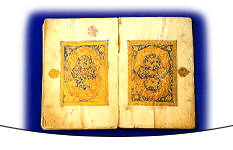
Script on figures had a specific development in Islam. It is stated in the sources that there are script styles more than twenty. The most popular script styles are commonest form Arabic scripts with cufic script and large lettered Arabic script.
Beside script, ornamenting the books had also a specific development in Turkish - Islamic art. It is called gilding to ornament the book pages with gild and coloured motifs.
The museum is very rich in script books and plates. The Koran, which was given to 1st Beyazıd by the Sultan of Memlük, is among the most important monuments of the museum. It consists of 356 pages, is written with large lettered Arabic script and is very rich in gilt. The outer ornamentation of the books is as important as the inner ornamentation. Bookbinding art was very common in Ottomans and gave its most important samples in 16th century. In the display cabinet where binding samples are being exhibited, there are faldstools and silver Koran envelopes as well.
There are script sets, pencil sharpeners and scissors in a display cabinet; and various brass candlesticks and lanterns in another.
7th Room
Baths have an important place in Turkish life. There are various bath habits and entertainment. Baths and bath materials carry great importance in Bursa, the city of thermal springs. Towel weaving has also been an important art of his city for a long time.
Beside an old towel weaving machinery, there are various towel sets ornamented with silver and silk, clogs ornamented with silver and mother-of-pearl, bath bowls, material boxes and ivory combs.
Eastern Room
An eastern room is prepared in the museum. The room does not a carry the characteristics of a specific period, but shows what a Turkish room looks like and what kind of materials it includes.
The ceiling was covered with wood, separated with mouldings; and ceiling boss, one of the monuments of the museum, was put in the middle of it.
Among the monuments being exhibited in the courtyard of the museum, there are Çanakkale ceramics of 19th and 20th centuries; two big candlesticks; a chest ornamented with colored chisel and having the portrait of 3rd Selim on it given by French collector Joseph Soustiel who provided many monuments to our museum before; an Edirnekari which have the monogram of 2nd Mahmud; and a wooden cradle painted with gilt.
Coin Section
Coin means metal money. There is a rich Islamic coin collection of the Museum of Turkish - Islamic Monuments. Among this collection including golden, silver and copper coins, there are the coins of all Ottoman Sultans, and the coins of governments, Seljuk, İlhanlı, Memlük, Abbasi, Emevi, Sasani and other Islamic states. The golden coin of 2nd Beyazıd, which has such a script on it :"Sultan el-Berreyn and Hakan el-Bahreyn el-Sultan bin sultan" and which exists only in Darphane and our museum, is one of rare Ottoman coins.
THE MUSEUM OF YENİŞEHİR ŞEMAKİ HOUSE
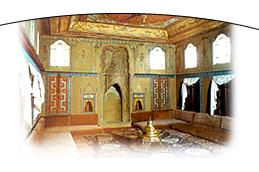
It is located in the centrum of Yenişehir District 55 km away of Bursa. The building was built in 18th century, by Şemaki family who came from Şemah district of Iran and settled to Anatolia. There is a paved courtyard at the ground floor of the duplex house. The kitchen and the pantry are at the right of the house, and there are two winter rooms at left. The wooden stairs adjacent to the kitchen wall is used to climb second floor. The forefront looking towards the garden opens to outside with colonnaded arched sections. There is a main room at left side opening to the vaulted hall and there are two rooms at right side, one of which is small and the other is big. The chisels ornamenting the house with plant motifs and landscape belong to 19th century.
The bath, which is supposed to be in he garden, does not exist today.
THE MUSEUM OF 17TH CENTURY OTTOMAN HOUSE
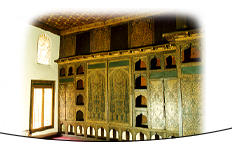
It is supposed that at the place of the house which is located in Muradiye District, at the opposite side of Murad Complex, there was a pavilion of Sultan Murad II. The house carries the characteristics of 17th century in terms of plan and ornaments, and it is one of the oldest and most beautiful houses of Bursa, which still remains standing. Two floors plans of the duplex building established in the garden are same. The house consists of a vaulted hall opening to the garden and one room both at right and left side opening to the vaulted recess. The rooms at the ground floor are winter rooms with low ceilings. The beautiful wooden wardrobe ornamented with chisel plant and flower motifs, geometric ornamented wooden ceiling and hexagonal central ornamentation of the ceiling in the main room of the upper floor show the characteristics of 17th century ornaments.
fonte: @edisonmariotti #edisonmariotti http://www.kultur.gov.tr/EN,39535/bursa-museums.html
colaboração



Nenhum comentário:
Postar um comentário